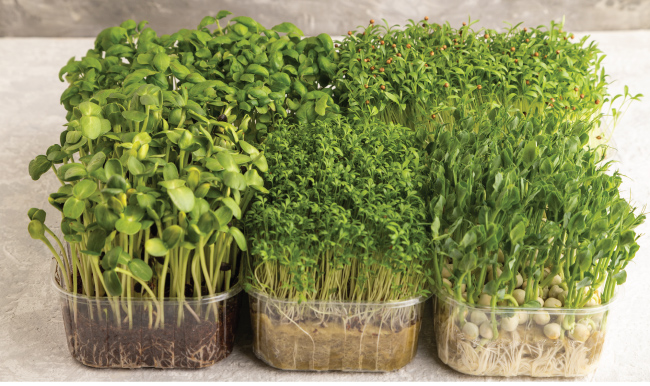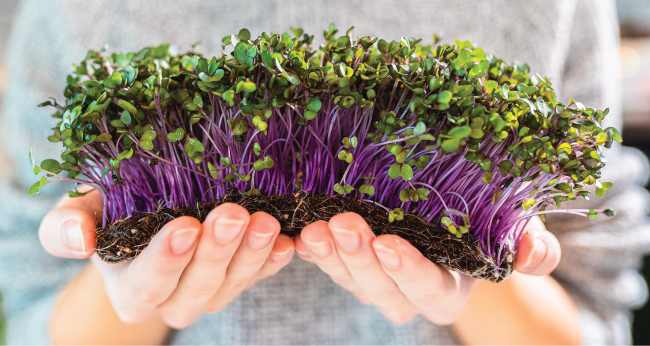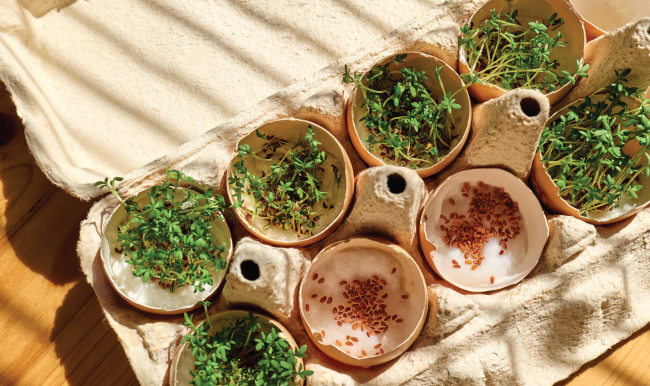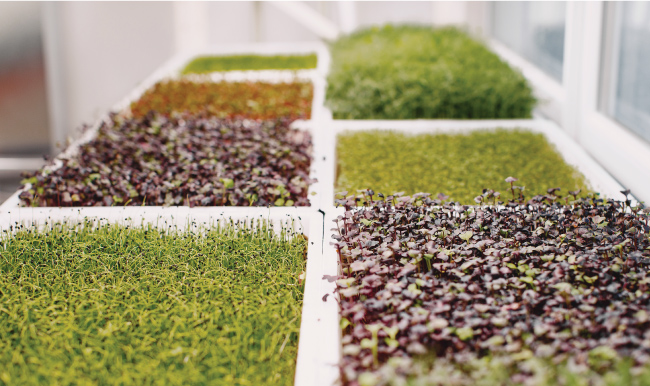Microgreens have taken the culinary world by storm, and for good reason. These tiny, nutrient-dense plants pack a punch of flavor and health benefits. Plus, they’re straightforward to grow right in your own home.
Whether you’re a seasoned gardener or a complete novice, growing microgreens indoors is rewarding. Let’s dive into why you should consider growing microgreens and how to do it step-by-step.
Why Grow Microgreens Indoors?

Nutrient Powerhouses
Microgreens are young vegetable greens approximately 1–3 inches tall. Despite their small size, they are loaded with nutrients.
Studies have shown that microgreens contain higher nutrient levels than their mature counterparts. They are rich in vitamins C, E, and K and packed with antioxidants.
Fresh, Flavorful, and Diverse
Growing microgreens ensures you have fresh produce at your fingertips. These little greens are known for their intense flavors, ranging from spicy to sweet, depending on the variety. They are versatile and can be used as a garnish or to elevate the taste of salads, sandwiches, and even main dishes.
Space-Efficient
One of the most significant advantages of growing microgreens is that they require little space and minimal effort. You don’t need a garden or backyard; a sunny windowsill or a small indoor grow setup is sufficient. This makes them perfect for urban homesteaders or anyone with limited space.
Quick to Grow
Microgreens are one of the fastest-growing crops, typically ready to harvest in 7–21 days. This quick turnaround means you can enjoy fresh greens quickly and continually plant new batches for a steady supply.
How to Grow Microgreens Indoors
Step 1: Gather Your Supplies
To get started, you’ll need a few basic supplies:
Seeds: Choose from various microgreens such as radish, broccoli, arugula, cilantro, or basil. Our favorite place to purchase microgreen seeds is True Leaf Market.
Growing Medium: Options include a seed-starting potting mix, coconut coir, or a hydroponic growing mat. We like to use sustainable seed starting mix and discard it in the compost bin when we’re done growing.
Containers: Shallow trays or seedling flats work well. They can have drainage holes, but it doesn’t matter. Just make sure you don’t overwater.
Light Source: A sunny windowsill works, but consider using a grow light for best results.
Step 2: Prepare the Growing Medium
Fill your container with the growing medium and moisten the medium with water until it is evenly damp but not waterlogged.
Step 3: Sow the Seeds
Evenly distribute the seeds over the surface of the growing medium. You don’t need to cover them with soil; pressing them gently into the medium is sufficient. Lightly mist the seeds with water using a spray bottle. The amount of seed depends on the variety, but it is always greater than you’d use in a garden if you want it to be dense.
Step 4: Provide the Right Conditions
Place the container where it will receive minimal light until the seeds sprout. Once the seeds sprout, they will need plenty of light. If using a grow light, position it about 12 inches above the seeds and keep it on for 12-16 hours daily. Maintain a consistent temperature of around 68°F to 72°F and some humidity for optimal growth.
Step 5: Water and Care
Keep the soil moist by regularly misting or lightly watering it. Be careful not to overwater, as this can lead to mold growth. Good air circulation is also essential, so consider using a small fan if necessary.
Step 6: Harvesting
Your microgreens will be ready to harvest when they have developed their first true leaves, usually within 7-21 days. Use scissors to cut the greens just above the soil line. Rinse them gently with water and enjoy!
Step 7: Repeat
After harvesting, you can reuse the growing medium for another batch of microgreens or start fresh. However, we like to succession plant so we have fresh microgreens every week. Experiment with different varieties to find your favorites.
Tips for Success
Start Small: If you’re new to growing microgreens, start with one or two varieties and gradually expand as you become more comfortable.
Monitor Light: Once your microgreens have germinated, ensure they are getting adequate light. If they appear leggy or pale, they may need more light.
Avoid Overcrowding: While microgreens should be more dense than a garden, it can be tempting to sow seeds too densely. Overcrowding can lead to poor air circulation and mold. Aim for an even distribution.
Growing microgreens indoors is a simple and rewarding way to add fresh, nutritious greens to your diet. You can enjoy a continuous supply of these flavorful plants with minimal space and effort year-round. So why not give it a try? Happy growing!
Resources
Microgreen Seeds and Growing Medium









